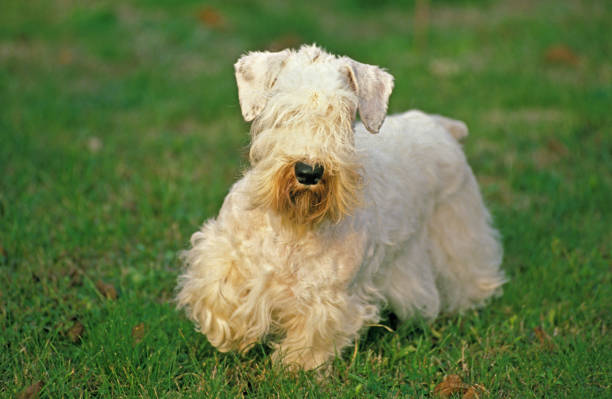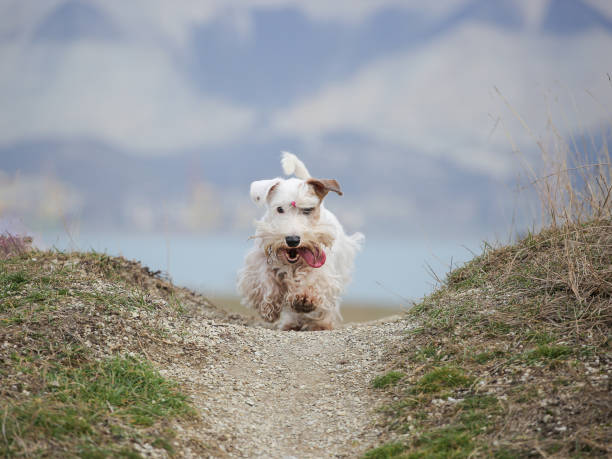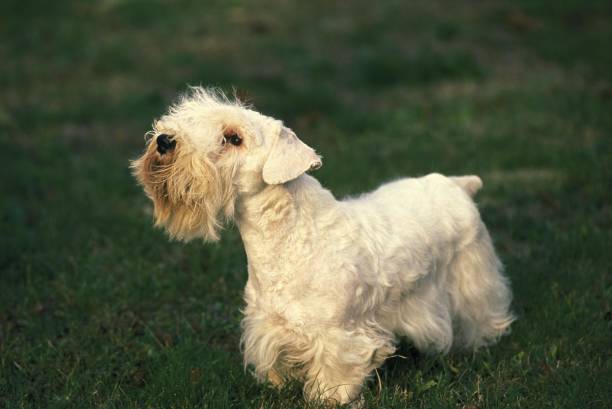Sealyham Terrier

Breed History:
The Sealyham Terrier was developed in the mid-1800s by Captain John Edwardes in Wales, specifically at the Sealyham estate in Pembrokeshire. His goal was to create a tough, agile terrier capable of hunting badgers, otters, and foxes through thick brush and underground. The breed likely includes ancestry from the West Highland White Terrier, Bull Terrier, Dandie Dinmont Terrier, and the now-extinct White English Terrier.
Once a favourite of Hollywood stars and British royals in the early 20th century, the Sealyham has declined in popularity and is now considered a vulnerable native breed by the UK Kennel Club due to low registration numbers.
Height: 27-31 cm
Weight: 9-10 kg
Size – Small to Medium
Life Expectancy: 12–14 years

Breed Appearance:
The Sealyham Terrier is a sturdy, low-slung dog with a rectangular body and a deep chest. It has a broad, strong head, a well-defined stop, and a long, powerful muzzle. Its distinctive bushy eyebrows, moustache, and beard give it a dignified, expressive look.
The coat is harsh, wiry, and weather-resistant, always white (sometimes with lemon, tan, or badger-colored markings on the ears or face). The tail is typically docked (in countries where permitted) and carried upright.
Breed Type – Companion/Vermin Hunter:
Originally bred as a working terrier, the Sealyham is calm, courageous, and affectionate. It retains a strong prey drive but is generally more laid-back than other terriers.
It is loyal and forms close bonds with its family, often displaying a gentle and humorous personality. Though reserved with strangers, it is not aggressive without reason and can make a wonderful family companion.

Training:
Sealyhams are intelligent and quick learners, but can be a bit stubborn or independent. Consistency and positive reinforcement are essential.
They do well with obedience and can enjoy dog sports such as Earthdog trials or agility if properly motivated. Early socialisation helps curb any excessive wariness or barking.
Health & Care:
Generally, a hardy breed, the Sealyham may be predisposed to:
-
Lens luxation
-
Retinal dysplasia
-
Deafness (especially in all-white dogs)
-
Intervertebral disc disease (due to long back)
Health screening and buying from reputable breeders are essential. Regular vet checkups and joint care support a long, healthy life.

Living Conditions:
Sealyhams adapt well to apartment or house living as long as their exercise needs are met. They’re relatively calm indoors and enjoy being part of family life.
A secure yard is ideal for supervised play, but they don’t require a vast space. They can be independent, but do not like being left alone for long periods.
Exercise:
Though more relaxed than many terriers, Sealyhams still need 30–60 minutes of daily exercise to stay healthy and content.
They enjoy walks, light games, and interactive toys. Their natural digging and hunting instincts make them excellent in controlled outdoor environments.
Grooming:
-
Regular brushing (2–3 times a week) is necessary to prevent matting
-
Hand-stripping the coat every few months maintains proper texture (pet trims are acceptable if not showing)
-
Bathing as needed
-
Routine ear cleaning, nail trimming, and dental care
While not heavy shedders, grooming is moderately high-maintenance if coat texture is to be preserved.

Advantages:
-
Affectionate, loyal, and good with families
-
Calm and less hyper than many terriers
-
Compact size and adaptable to small living spaces
-
Distinctive, charming appearance
-
Good watchdog—alert but not yappy
-
Generally long-lived and hardy
Disadvantages:
-
Can be stubborn or independent
-
Grooming-intensive if hand-stripping is maintained
-
May dig or chase due to terrier instincts
-
Potential for deafness or eye issues in some lines
-
Needs consistent training and mental stimulation
-
Rare—can be hard to find responsible breeders

